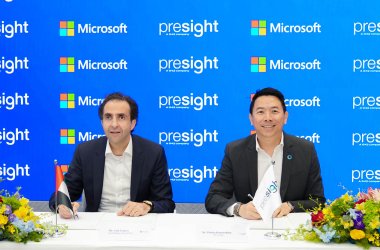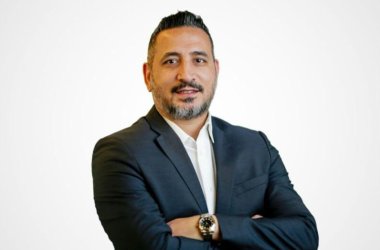
Cloud computing in the region is yet immature, and there are several challenges that exist in the region. Nevertheless, there is constant innovation and improvement that is taking place, and we are likely to see dramatic improvements in the near future. This was the conclusion of the speakers at the first day of Cloud Congress 2011.
End-users, industry experts and multiple other stakeholders got together at the ground-breaking event today to discuss the state of cloud solutions and services in the region.
At the opening keynote, Tibor Loncsar, director of strategy and operations for IT at DWTC explained the hybrid model used by his organisation and how they have profited from it.

“DWTC uses a hybrid cloud for its corporate email and we have been pleasantly surprised by the results. The primary concern was the interoperability and the ability to have it function with internal infrastructure. With everything in place now the hybrid cloud provides continuity, quick recovery, security filtering and archiving,” said Loncsar.
Loncsar, an open advocate for cloud computing, advised organisations to go for it as it is easier and better than what could be expected. “The bottom line though – expect the unexpected. It will get more complicated as you grow and you are ready to take the next step,” said Loncsar.
The Congress, which was divided into two tracks, brought together exceptional speakers to talk on the various elements surrounding cloud computing.
Ali Radhi, head of IT at MBC Group started the tracks with his session on cloud optimisation focusing on interoperability and standardisation. He drew from his own experiences at MBC to illustrate the points he made during his presentation.

“MBC has been deploying cloud solutions for the last three years. We have moved from private to hybrid to private over the years, and interoperability has been a major issue,” said Radhi.
“Risk management is essential before using cloud computing and business decision makers need to be involved. It is very important for every organisation to build its information base for cloud sharing, and understand that integration with multiple platforms is one of the biggest challenges in cloud computing,” he stated.
Mohamed Roushdy, CIO of Siraj Finance discussed the various ROI models that could be used to evaluate cloud providers and solutions, and expanded on the methods in which end-users could profit from their cloud investments in the shortest possible time.

“Bringing about a cultural change within the organisation is the most difficult element in any cloud computing project. Convincing the CEO, CFO and other business heads that this could potentially help the business, and some of the issues can be handled for the betterment of the company is a huge change management project. Half the success of any cloud computing project simply depends on getting this sign-off from the higher management,” he stressed during his session.
Organisations should not be deterred by challenges. They should understand business needs and invest in a model that suits you, he added.

Mike Tsalidis, server and tools business group lead for Microsoft MEA discussed cloud for the greater good, and improving productivity with cloud investments during his session. While detailing the main differences between private and public clouds, Tsalidis also gave shape to the company’s cloud strategy and solutions.
Talking about linking cloud strategy to IT strategy, Javed Abbasi, director of IT and operations at Gisba Group from Saudi Arabia said, “Aligning IT strategy to business is very different from integrating IT strategies with business. Without strategy, IT is untamed.”

He added, “With relation to the cloud people often forget that the service depends on a physical data centre. Organisations must understand and verity the infrastructure operations and management processes that the provider has in place.”
“There is a lot of difference between a local cloud partners and a strategic cloud partner. The maturity of enterprises and partners are not mature enough to move there yet. But enterprises should try to move there, because they are then likely to see more benefits from the partnership,” said Ed Capaldi, divisional director of IT at Al Nisr Publishing.
Strategic partners will work in co-ordination with the IT and the business departments of the organisation for the long-term benefit of the firm. Capaldi outlined ten considerations for enterprises when choosing a strategic cloud partner including openness, outlining KPIs, partner’s understanding of the organisation’s cloud strategy, financial stability and scale of the partner and SLAs (service level agreements).

“Good strategy is the result of correct decisions, and half the time it is simply knowing what not to do. Currently though cloud computing remains unstable and therefore a highly risky proposition for companies,” said Capaldi. He also bemoaned the lack of skilled personnel for IT jobs, calling most of the people who are entering the region as new recruits as “idiots right out of college.”
Ramesh Krishna Bhandari, business development specialist – business solutions, central marketing at Etisalat said, “Cloud spending in 2010 was $37.8 billion and is expected to grow 26% and hit $121bn by 2015. More than 80% of this is expected to be SaaS-centric cloud spending.”

“Data is growing at 6trillion bytes per second. Considering all this, and the multiple benefits that come with the cloud, over 70% of businesses in the Middle East are either using or will be using cloud in the next 6-12 months,” he said.
He was speaking on the subject of growing with the cloud at the Congress. He added that while the cloud gives exponential opportunities for any business to grow, there is no one size fits all with these services and solutions, and that a truly flexible cloud requires team effort.
Nick Black, technical manager for the Mediterranean, Middle East and Africa at Trend Micro spoke at length about virtualisation and cloud computing, and the role of security within these implementations.
“Deep Security protects virtual machines (VMs) and ensures that the host defends itself against the changing threat landscape. This is the ideal situation. It can even be used to defend public clouds – even those with multi-tenancy,” said Black.

“Nevertheless, regardless of the security solutions used by a service provider in the public cloud, the end-user should encrypt his data when transferring and storing it with the service provider. The decryption key should remain with the end-user and this is the only way to ensure that critical organisational information remains protected even when they move from one service provider to another,” said Black.
He also stated that an organisation can use Trend Micro’s management console to keep an idea on security on the public cloud where its information is stored. He also touched briefly upon the controversial subject of who owned the data and who would take responsibility for it when security failed.
“Even well established public cloud service providers have clauses in their agreements whereby they move responsibility for security and data loss over to the person who buys the service. Keeping this in mind, it is always best for the end-user to take a more direct interest in the security of their information when handing it to a service provider,” said Black.

The panel at the end of the day that brought together all the speakers of the day discussed the multiple challenges that faced the cloud, and identified areas of growth in specific industries for it as well. An involved debate on SLAs and service providers also ensued between the panellists, with some stating that the dominant service provider should take steps to provide end-to-end SLA provisions that come with penalties attached to them.
Cloud Congress 2011 is being held between September 19th and the 20th at the One and Only Royal Mirage Hotel in Dubai. The conference, which is sponsored by Etisalat and Riverbed, is being conducted by CNME, the premier technology magazine of the region, and CPI, one of the leading publishing houses of the Middle East.
For live updates from the second day of Cloud Congress 2011, follow us on www.twitter.com/computernewsme.





